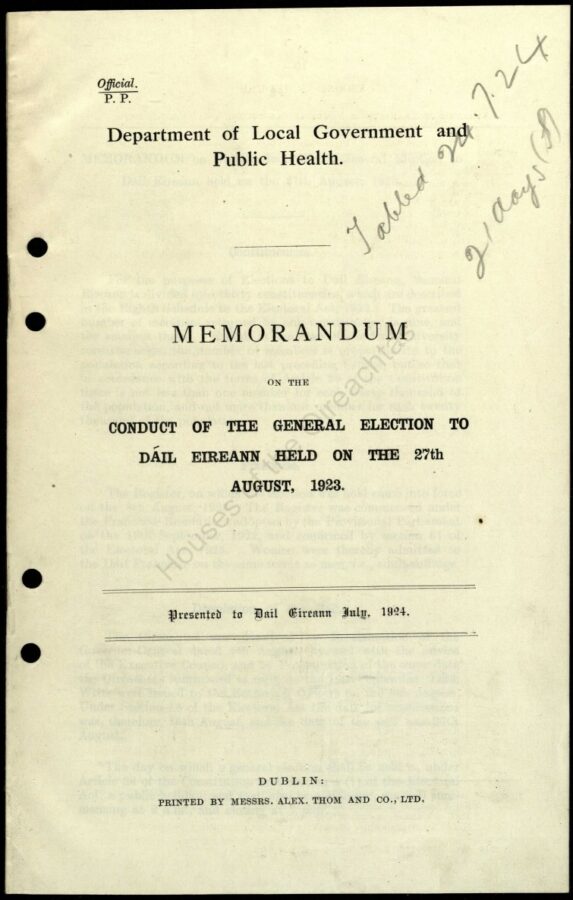The Salt of the Generations:
Padraig Pearse once wrote that: “There are in every generation those who shrink from the ultimate sacrifice, but there are in every generation those who make it with joy and laughter and these are the salt of the generations”. Cork is very lucky that the “salt of the generations” is encountered in ever aspect of community life. However in the past two weeks I especially felt it in two of our well-known sporting clubs in the city, which I had formal visits to. Both clubs show that the game itself has been important but sport has built communities of interested and engaged Corkonians.
In 1943, Na Piarsaigh was founded by a group of schoolboys from the North Monastery School. Europe was embroiled in the Second World War – across Europe there had been death and exhaustion – despite Ireland’s neutrality, rationing was common place across cities such as Cork. Materials were in short supply so the housing plans for sites such as Ballyphehane and Fair Hill were on hold. Buildings that had started construction remained unfinished such as St Augustine’s Church. The progress of the City remained in limbo.
However, that did not stop the ideals of several very young men, who deemed a new club was needed in the heart of Cork’s northside. With a great love for our national culture and games, they established a club, which also reflected on the legacy and memory of Pádraig Pearse. They asked their teacher Donnacha O’Murchú to be their first President.
Quickly the club grew in membership, but it was not easy as there were challenges around where did this new club fit in the Cork GAA ecosystem. Training was conducted across various fields and eventually Junior championship wins began to flow.
In 1951, the secretary Donncha O’Griofa noted of the growing membership– “encourage them to think they are the coming champions. The success of our club ultimately rests on the generation to follow”.
Eighty years later Na Piarsaigh can boast many wins, a club with many friends, a family atmosphere, and a club within the world of sport the City knows it can call upon when it needs to. Happy eightieth birthday Na Piarsaigh!
A North-South Cross Border Project:
Over in the southern suburbs of the city, Blackrock Hurling Club recently hosted young players from Na Magha, in Derry City. Blackrock Hurling Club’s website describes that it was officially founded in 1883, one year before the foundation of the Gaelic Athletic Association itself. It is therefore the oldest hurling club in Cork. Until 1888 the club was known as Cork Nationals, when it changed its name to National Hurling Club of Blackrock, and later in the same year to Blackrock National Hurling Club.
Na Magha was founded in 1982 and is the only hurling & camogie club in the City of Derry. Based in Ballyarnett at Páirc Na Magha, they have great facilities to help promote the national sport of hurling to a high standard. They have both hurling and camogie teams from Under 6 right up to senior level.
Denis Doherty from Na Magha Derry spoke to me for my ongoing #VoicesofCork film project and related that his hurling club & how his club has been coming to Cork’s Blackrock Hurling Club for 40 years with some of Derry’s youngest hurlers. There are also reciprocal visits to Derry every year. This cross border activity of hurling began as a respite project away from the Northern Ireland Troubles. Over the many years, the project has offered a fantastic opportunity for the young players to visit each other’s cities and get to know each other’s communities more.
Meeting Notes from the Lord Mayor’s Desk:
August 26, I was delighted the launch of The Everyman’s Autumn season. it’s jam-packed with family favourites, comedy shows and captivating performances. Cork’s favourite traditional family Panto returns withBeauty and the Beast, directed by Catherine Mahon-Buckley. The co-production with CADA will run from Saturday 2 December to Sunday 14 January. In an undoubted season highlight, The Everyman will also co-produce The Women, We Will Rise with singer-songwriter Karan Casey, in association with Cork Folk Festival. It will place women centre stage with songs and stories about women from Ireland’s past, whilst singing into being a vision for the women of the future. See EverymanCork.com for more.
26 August, It was an interesting photocall to say the least on the steps of City Hall. But I was delighted to greet and sing with cyclists on the Irish Leg of the World Naked Bike Ride. Well done to all who took on the challenge. The event is part of a worldwide phenomenon where cyclists dabble in nudism in over 50 countries to send a strong message that we need to transition to renewable sources of energy and forms of transport.
August 26, It was a fantastic afternoon at the Ballinlough Summer Festival. Local volunteers hosted an incredible family fun event across the scenic Ballinlough Community Park.
August 26, I officially opened the North Main Street Carnival run by the Middle Parish Community Association. It was great to see the street pedestrianised for a day and the street filled by family filled activities.
August 21, I attended and spoke at the official Opening of the Roches Building at Mercy University Hospital (MUH). The 30-bed project, named after the late Sr Laurentia Roche, the last matron of the hospital, includes two ultra-modern operating theatres, of which one is a hybrid theatre, the third of its kind in the country. MUH said that robotic surgery will be introduced in the coming months, which will lead to reductions in surgical site infections, blood loss, and tissue damage during procedures, as well as shorter stays and fewer complications after operations.


